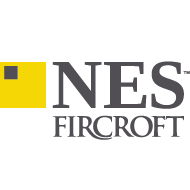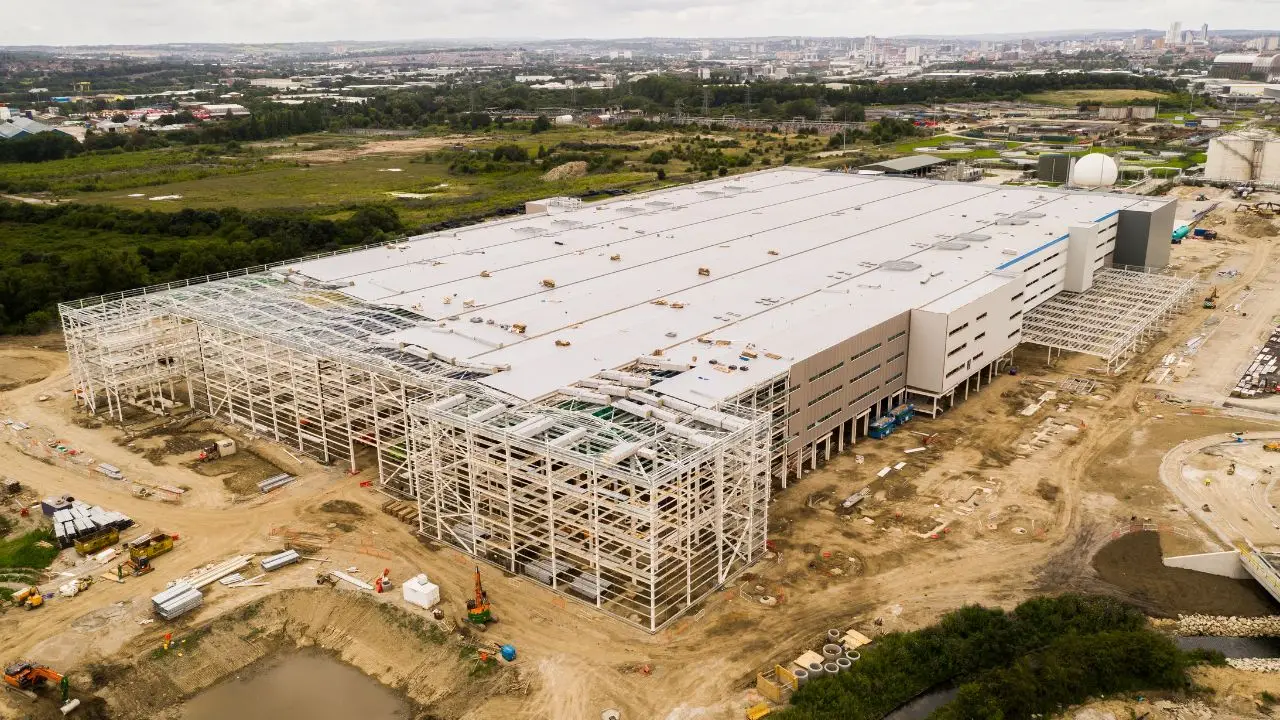CapEx Project Recruitment Strategies in Life Science
31 Mar, 202510 MinutesRecruiting for capital expenditure (CapEx) projects can often be more challenging than conve...

Recruiting for capital expenditure (CapEx) projects can often be more challenging than conventional hiring. Life science projects are high-stakes, complex ventures that require professionals with a specific blend of adaptability, technical expertise, and experience. Your hiring strategies to secure this talent will help determine the project’s success and position your business as an attractive prospect in the job market.
This blog will support businesses by discussing actionable recruitment strategies for becoming an employer of choice to support the attraction and retention of talented CapEx professionals.
How to Become an Employer of Choice for CapEx Professionals
CapEx life science projects require a wide range of professionals with diverse and niche skill sets. Roles needed for a successful project include:
- CSV Engineers
- Project Directors
- Automation Consultants
- Construction Managers
- Process Engineers
- Financial Analysts
While the professionals on a CapEx project may have different responsibilities, the reasons that attract them to a business are often similar. Many seek a sense of purpose, knowing their work contributes to advancements in life sciences. They also value an inclusive and diverse workplace that prides itself on collaboration and innovative approaches to driving project efficiency. Another key consideration is competitive compensation that is aligned with industry and location standards.
CapEx project recruitment can be challenging, but there are several talent acquisition strategies businesses can implement to position themselves as an employer of choice for both local and international talent. Here are some effective strategies for attracting and retaining CapEx professionals.
Building a Strong Employer Brand
A key part of an effective talent strategy should be identifying what sets your company apart as an appealing workplace for CapEx professionals. As part of your employer brand, you should be ready to showcase your mission, the impact of your projects, stand-out achievements, and your values.
CapEx projects are critical to driving research breakthroughs, improving drug development processes, and enhancing production capabilities to bring life-saving treatments to market quickly. Demonstrating your commitment to these transformative projects positions your business as a leader in advancing progress in the life science industry, making you a more appealing employer on the job market.
Here are three examples of CapEx projects from 2025 that have a clear mission and have long-term benefits, which can be used in their employer branding for future projects and recruitment drives:
- WuXi Biologics’ Vaccine Manufacturing Centre – This new facility will support several vaccine technologies, including mRNA, protein vaccines, and viral vectors, all in one place. The facility’s integration of multiple vaccine technologies is a major step forward. It will allow for faster development of vaccines, with the potential to reduce the time to market for new treatments.
- Fujifilm Diosynth’s Cell Culture Facility – This will be the largest end-to-end cell culture CSMO in Europe. It will handle development, manufacturing, packaging, and labelling. The project will be a major boost to Europe’s biopharmaceutical manufacturing capacity and could lead to more cost-effective and efficient biologics production.
- Sanofi’s Evolutive Vaccine Facility (EVF) – The facility aims to produce multiple vaccines simultaneously. Its innovative design enables fast adaptation to different production needs, making it versatile in responding to different health challenges, such as a global pandemic.
To discover more about these innovative projects and how they are reshaping life sciences in 2025, explore our latest video.
How to Showcase Employer Brand and Achievements
Here are some approaches businesses can take to ensure you have the talent you need for your next CapEx life science project:
- Attend Conferences and Events - These events provide opportunities to connect directly with potential future hires and highlight your business’s achievements and future projects through demonstrations, discussion panels, and presentations.
- Podcasts - Due to the rise of podcasts, it’s becoming an increasingly important recruitment tool for businesses. Setting up your own podcast, you can explore breakthroughs, sector trends, and your project's contributions to advancing life sciences. This provides you the opportunity to access a wide audience of industry professionals.
- Your Website - Your business’s website offers an ideal platform to showcase your values, culture, and achievements to potential candidates. Improve your online visibility by using testimonials, videos, and case studies highlighting your company’s success and innovation.
- Job Advertisements - As well as displaying the specific skills you need for a new life science project, you can showcase key accomplishments that inspire candidates to submit their applications. Examples could be how you have supported improving the speed of vaccine development or creating more efficient, cost-effective biologics production.
- Press Releases and Publishing Scientific Papers - You can position yourself as a thought leader in life sciences through channels such as peer-reviewed journals and media outlets specialising in the industry.

Offer Competitive Compensation and Benefits
Given the high demand for CapEx specialists in life sciences, organisations must ensure their salary and benefit packages are competitive to attract candidates with niche skill sets, as they could have multiple potential employers to choose from.
Research Market Trends
Using tools such as salary benchmarking reports to understand the market rate for roles such as project managers, CQV engineers, and construction managers.
Here are the key steps to conducting an effective salary survey:
Define the Objectives
By setting clear goals, you will guide the direction of your salary. Examples of this include:
- Improving employee retention
- Completing salary benchmarking against local and international market rates
- Developing competitive salaries to attract new professionals
- Identifying and addressing internal salary inequity
Choosing Reliable Sources
The next crucial step is using accurate and reputable market salary data. Ensure you choose frequently updated sources so your results reflect the latest information.
Examples of sources include:
- Industry reports
- Internal data
- Life science recruitment agencies
- Compensation management platforms like Figures and Salary.com
- Government databases such as the U.S Bureau of Labor Statistics
Selecting the Data Points and Roles to Survey
The next step is to decide which roles and data points to survey. For instance, you may complete a survey of all roles or focus on selecting jobs within a project with a particularly low engagement or retention rate. Examples of data points include bonuses, base salary, benefits, and total compensation.
Gather and Analyse
Using a consistent format will speed up your analysis, and using analytics tools can significantly quicken the process. All data must be cross-checked and verified where possible to help ensure accuracy. Also, variables like experience, role responsibilities, location, and organisation size should be taken into account.
Apply the Results
Your survey results can then inform your pay structure review and overall compensation strategy. These results may be the catalyst for adjusting pay scales, creating salary bands, addressing inquiries, and creating new compensation packages to offer CapEx professionals and stay competitive in the job market.

Having a Mixture of Local and International Talent
Building a workforce for a CapEx project requires hiring managers to find highly demanded and often niche skill sets, such as knowledge of regulatory standards, risk management, and engineering. Due to the challenges of acquiring this talent, an effective talent acquisition strategy is looking at both local and international talent pools.
Hiring International Talent
Hiring international talent for a CapEx project brings a world of skills and expertise that may not be readily available in the local market. To attract professionals, businesses should research market rates across different regions to ensure their salary and benefits packages meet global standards.
Offering flexible work arrangements where possible, such as remote options or adaptable schedules, can also make roles more appealing, particularly for candidates in different time zones. Additionally, attending international conferences and industry events provides valuable networking opportunities, helping businesses connect with skilled professionals and position themselves as attractive employers in the global life science sector.
Advantages of Hiring International Talent:
- Access to Global Expertise - Any business starting a new project in a new location and market always has uncertainty and unknowns, no matter the level of planning involved. A team of international CapEx professionals has built global networks, has a proven record of accomplishments, and has been exposed to international trends and best practices to help drive project success.
- Widens the Talent Pool
s- Hiring international talent for a CapEx life science project broadens the talent pool, giving businesses access to specialised skills and expertise that may be scarce locally. This is particularly valuable for niche projects that require specific technical knowledge, as it ensures that the right expertise is in place to drive innovation and efficiency. - Strengthens Market Presence - It can also enhance a company’s reputation as a global player by showcasing its ability to collaborate across borders and integrate diverse expertise. This helps to strengthen the company's credibility in international markets and makes it more attractive to talent worldwide, potential business partners, and investors.
Hiring Local Talent
Hiring international talent is an effective CapEx recruitment strategy due to the diverse skills, perspectives, and experience they can bring to a life science project. However, it’s not without complications. Visas and work permits are just two of the hurdles businesses must overcome. Having an alternative local talent pipeline to run alongside international recruitment is a proactive method that ensures you have the professionals you need.
Businesses can develop local networks by building relationships with industry associations, training providers, and universities that specialise in courses such as engineering, supply chain management, and accounting, providing you access to talented local professionals.
Advantages of Hiring Locally:
- Local Knowledge - Residents of the country on which the project is based will have first-hand knowledge of the work environment, language, and culture. Furthermore, a local professional may have developed a network of contacts with the skills and experience you need to fill other roles on the project.
- Easier and More Cost-Effective - One of the more obvious but crucial advantages of hiring local professionals is the time and money a business can save. Hiring local professionals means not spending money on sponsorships, relocation costs, and visas.
- Builds a Team of Diverse Talent - This could also be a benefit of hiring international talent, as building a project team of locals and expats will bring in a wealth of knowledge from different perspectives and experiences. Furthermore, having local talent on a team can help integrate international workers into the local community and workplace.

Having a mixture of international and local talent will only add to building your employer brand's attractiveness to CapEx professionals. It will position your business as an inclusive and diverse workforce that embraces different perspectives, experiences, and skill sets.
Hiring locally demonstrates a commitment to the community where the project is being developed. This contributes to the future of life sciences and creates opportunities for skilled local professionals.
It conveys clearly that the project values local expertise and is committed to supporting the region's workforce. This approach can attract additional local talent, strengthen the industry, and develop long-term growth.
Concluding Becoming an Employer of Choice for CapEx Professionals
Attracting and retaining CapEx professionals requires a strategic approach that balances competitive compensation, a strong employer brand, and access to local and international talent. By positioning their company as an employer of choice, leaders ensure that projects benefit from the best expertise available, driving efficiency, innovation, and breakthroughs in life sciences.
A blended workforce of local and international talent strengthens your project’s capabilities and enhances your company’s reputation as an inclusive, forward-thinking employer. Demonstrating a commitment to both the global talent market and local communities helps businesses remain competitive while developing long-term industry growth.
Partner with a Global CapEx Project Recruitment Agency
As investment in life sciences continues, securing the right talent is essential for delivering complex CapEx projects efficiently and to the highest standards. NES Fircroft provides specialist professionals across engineering, project management, and compliance to support every phase, from initial planning to final execution. We have an established talent pool of qualified local and expatriate candidates that can be swiftly deployed to project sites, ensuring you have access to the world's top talent. With over 80 offices worldwide, we provide tailored recruitment solutions wherever and whenever needed.
Contact us today and ensure your project has the expertise it needs to succeed.









